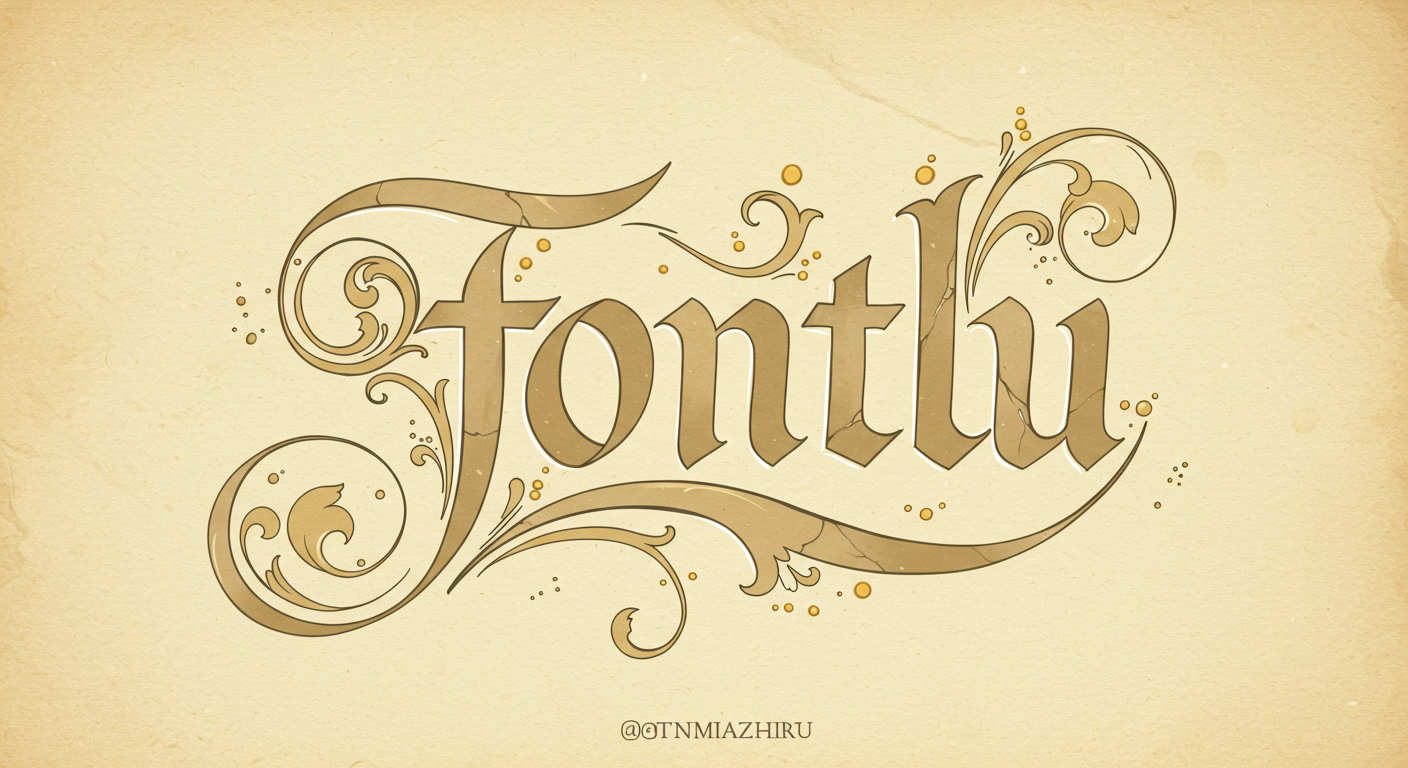When it comes to modern digital creativity, the word Fontlu is becoming more recognized in design, branding, and typography circles. Though the term may sound unusual at first, Fontlu represents a concept that blends fonts, creativity, and usability in digital spaces. Fonts play a crucial role in shaping how people perceive brands, websites, and applications. Similarly, Fontlu emphasizes the significance of well-chosen typefaces and design strategies that leave a lasting impression on audiences.
In this article, we will explore Fontlu in detail, including its meaning, importance in digital design, real-world applications, and how businesses and creators can harness its power.
What is Fontlu?
At its core, Fontlu can be described as a term that represents a creative space where typography meets functionality. Fonts are not just letters on a page; they carry personality, style, and emotion. Fontlu emphasizes the idea that typefaces should not only look attractive but also be functional for readability and accessibility.
In a world where digital content is consumed at lightning speed, the importance of clear, attractive, and engaging fonts has never been greater. Fontlu stands as a guiding principle for designers who want to blend creativity with clarity.
The Importance of Fontlu in Branding
When companies design their visual identity, fonts often become the foundation of their branding. A logo, website, or advertisement without carefully chosen typography feels incomplete. Fontlu highlights the relationship between branding and typography in the following ways:
-
Consistency – Using fonts aligned with brand values ensures uniformity across platforms.
-
Emotional Connection – A playful font conveys creativity, while a bold one projects authority.
-
Readability – No matter how creative a design looks, readability remains non-negotiable.
Brands that embrace Fontlu principles are more likely to create stronger identities that customers remember.
Fontlu and Web Design
In web design, Fontlu takes on an even deeper meaning. Websites are the primary gateway for users to connect with businesses, and typography plays a big role in user experience. Poor font choices can drive users away, while strategic typefaces can enhance engagement.
Key aspects of Fontlu in web design include:
-
Responsiveness: Fonts must look good on desktop, tablet, and mobile devices.
-
Accessibility: Fontlu principles encourage designers to consider users with visual impairments by choosing readable, high-contrast fonts.
-
Loading Speed: Heavy custom fonts can slow down websites. Fontlu encourages balance between design and performance.
Fontlu in Social Media Content
Social media thrives on visuals, and typography has become a central part of how content stands out in crowded feeds. Influencers, brands, and creators use Fontlu-based strategies to grab attention through:
-
Bold headlines on Instagram posts.
-
Eye-catching captions with unique fonts.
-
Branded stories and reels with typography overlays.
By applying Fonlu concepts, social media campaigns can look both professional and engaging.
How Fontlu Enhances User Experience
User experience (UX) design is not just about buttons and navigation; it also involves how text appears to users. The philosophy of Fonlu improves UX through:
-
Clarity – Fonts that are easy to read reduce frustration.
-
Hierarchy – Using different sizes, weights, and styles guides users through content.
-
Aesthetics – Attractive fonts enhance enjoyment, making users stay longer.
A designer who understands Fonlu principles knows that typography is as essential as layout or color schemes.
Real-World Applications of Fontlu
Fontlu has relevance across various industries:
-
Publishing: Books, e-books, and magazines rely on proper fonts for reader comfort.
-
E-commerce: Online stores use Fonlu-driven typography to highlight products and promotions.
-
Education: Learning platforms apply readable fonts to enhance student comprehension.
-
Corporate: Presentations, reports, and proposals benefit from clean and professional typography.
Wherever text exists, Fontlu principles can be applied to maximize impact.
The Evolution of Fontlu
Typography has evolved dramatically over centuries. From handwritten manuscripts to printing presses, and now to digital displays, fonts continue to shape human communication. Fonlu represents the latest evolution, where the fusion of design, readability, and technology drives innovation.
As new devices and platforms emerge, typography will continue adapting. Designers who embrace Fonlu will stay ahead in creating memorable and functional digital experiences.
Tools and Resources Supporting Fontlu
For those who want to practice Fonu principles, there are several tools and platforms available:
-
Google Fonts: Free and accessible library for web and graphic design.
-
Adobe Fonts: Premium collection for creative professionals.
-
Canva: Provides ready-made templates with flexible font options.
-
Figma and Sketch: Popular UI/UX tools with strong typography features.
These resources make it easier for businesses and creators to align with Fotlu practices without advanced technical expertise.
Benefits of Applying Fontlu
When organizations and creators implement , they unlock multiple benefits:
-
Stronger brand recognition.
-
Better audience engagement.
-
Improved readability and accessibility.
-
A modern and professional appearance.
Whether you are a designer, marketer, or entrepreneur, understanding ensures your content remains both visually appealing and user-friendly.
Challenges in Practicing Fontlu
While offers many advantages, applying it effectively comes with challenges:
-
Choosing the right font from thousands of options.
-
Balancing creativity with readability.
-
Maintaining font consistency across multiple platforms.
-
Ensuring performance optimization for digital fonts.
Overcoming these challenges requires thoughtful planning and a keen eye for design.
The Future of Fontlu
Looking ahead, the role of in digital spaces will only grow. With the rise of AI, VR, and AR technologies, typography will need to adapt to immersive environments. Fonts may soon become interactive, animated, or even voice-responsive.
Businesses and designers who embrace the evolving nature of will stand out in the future of digital communication.
Conclusion
Typography has always been at the heart of human communication, but in the digital era, its role has expanded dramatically. represents a modern philosophy where creativity, functionality, and user experience intersect. From branding to web design, from social media to education, ensures that fonts are not just decorative but also purposeful.
By adopting principles, businesses and creators can build stronger identities, engage audiences more effectively, and create experiences that resonate deeply. As technology advances, will continue to shape the future of digital design, proving that fonts are more than just letters—they are powerful tools of expression.

